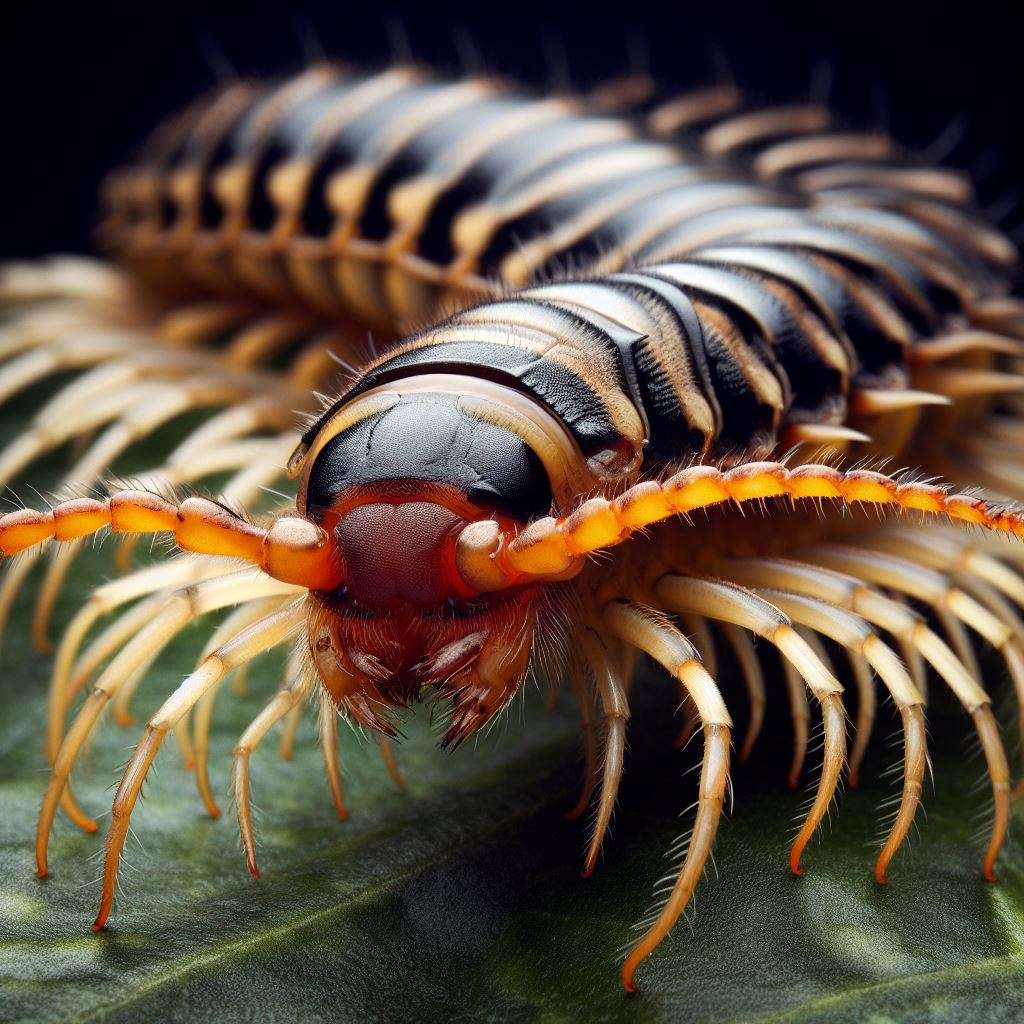The Importance of Centipedes in Ecosystems
Centipedes, with their numerous legs and rapid movements, can be quite intimidating to some.
However, before you reach for that shoe or spray, it’s crucial to understand the significant role these creatures play in our ecosystem.
Centipedes, often misunderstood and sometimes feared, are fascinating creatures that play a vital role in maintaining the delicate balance of ecosystems.
Despite their numerous legs and formidable appearance, these arthropods serve essential functions in nature.
This article explores why you shouldn’t kill centipedes, the importance of centipedes in ecosystems, why it is crucial to protect these intriguing insects and How to safely and humanely relocating them.
Table of Contents
1. Natural Pest Controllers
Centipedes are natural predators, primarily feeding on insects and other small invertebrates.
They help control pest populations, acting as a natural form of pest control.
By preying on insects like cockroaches, termites, and ants, centipedes assist in keeping their numbers in check, reducing the need for chemical pesticides in agriculture and households.
2. Maintaining Biodiversity
Biodiversity refers to the variety of life forms in a particular habitat or ecosystem.
Centipedes, as part of the ecosystem, contribute significantly to biodiversity.
By regulating the population of certain species, they prevent any one species from dominating an area.
This balance ensures that various plant and animal species can coexist, fostering a diverse and healthy ecosystem.
3. Food Source for Other Animals
Centipedes are not only predators but also prey for numerous other animals. Birds, amphibians, and some mammals rely on centipedes as a food source.
Removing centipedes from the ecosystem could disrupt the food chain, affecting the populations of these animals and potentially leading to imbalances in the ecosystem.
4. Decomposition and Nutrient Cycling
Centipedes play a vital role in the decomposition process.
They feed on dead plant material and other organic matter, breaking it down into simpler compounds.
This decomposition is essential for nutrient cycling in ecosystems.
By breaking down organic matter, centipedes release nutrients back into the soil, enriching it and promoting plant growth.
Healthy plant life, in turn, supports various animals and insects, completing the cycle of life in the ecosystem.
5. Environmental Stewards
Centipedes contribute to the overall health of the environment by aerating the soil as they burrow and facilitating the decomposition of organic matter.
Their activities enhance soil structure, allowing air and water to penetrate the ground, which benefits plant growth.
Healthy soil is the foundation of terrestrial ecosystems, and centipedes play a part in maintaining its vitality.
Why You Should Safely Relocate Centipedes
Environmental Balance: Killing centipedes can disrupt the natural balance of your surroundings.
Removing them without harming them ensures that your ecosystem remains stable, preventing unexpected consequences in the form of increased pest populations or imbalances in local flora and fauna.
How to Safely Relocate Centipedes
1. Gather Necessary Supplies: Prepare a container with a lid, a piece of cardboard, and a gentle brush. This will allow you to scoop up the centipede without touching it directly.
2. Gently Encourage the Centipede into the Container: Use the brush or a piece of paper to gently guide the centipede into the container. Be patient and calm to avoid startling the creature.
3. Secure the Container: Once the centipede is inside, carefully place the lid on the container to secure it. Make sure there are small air holes in the lid to allow for ventilation.
4. Release the Centipede: Take the container to an appropriate outdoor location, such as a garden or wooded area, and gently release the centipede onto the ground. Ensure it has a safe environment with shelter and moisture.
Why We Should Protect These Fascinating Creatures
In conclusion, centipedes are not just creepy-crawly insects; they are essential components of ecosystems worldwide.
Their role as natural pest controllers, contributors to biodiversity, food sources for other animals, facilitators of decomposition, and environmental stewards highlight their significance in maintaining the balance of nature.
Understanding and appreciating the importance of centipedes can lead to a greater respect for these creatures and a commitment to their conservation.
As responsible stewards of our planet, it is imperative that we protect and preserve these fascinating insects for the well-being of our ecosystems and the life they support.
FAQs
- How Many Pairs of Legs Do Centipedes Have?
- Centipedes typically have one pair of legs per body segment. Despite their name, which means “hundred feet,” the actual number of legs varies among species. Commonly, centipedes can have anywhere from 15 to over 300 legs, depending on the species.
- Why are centipedes important in ecosystems?
- Centipedes play a crucial role in controlling insect populations, acting as natural predators. They help maintain a balance in the ecosystem by controlling the numbers of various invertebrates.
- What is the ecological role of centipedes?
- Centipedes contribute to the decomposition of organic matter, aiding in nutrient cycling. They also serve as a food source for many larger animals, thus contributing to the food web.
- How do centipedes contribute to soil health?
- Centipedes burrow into the soil, improving its structure and aeration. This enhances water infiltration and nutrient circulation, benefiting overall soil health.
- Do centipedes have any impact on pest control?
- Yes, centipedes are effective predators of insects and other small arthropods. They help control populations of pests, reducing the need for chemical pesticides.
- Are centipedes important for plant health?
- Indirectly, yes. By controlling herbivorous insects, centipedes indirectly contribute to the well-being of plants, preventing excessive damage and promoting plant growth.
- Do centipedes have any medicinal or scientific significance?
- Some compounds found in centipedes have been studied for potential medicinal uses. Additionally, they are of scientific interest in fields such as ecology and entomology.
- Are centipedes harmful to humans?
- Generally, centipedes are not harmful to humans. Most species are not venomous enough to cause serious harm, and they prefer to avoid human contact. However, some individuals may be sensitive to their venom.
- How can we encourage centipede populations in our gardens or ecosystems?
- Maintaining a diverse and healthy ecosystem with minimal use of chemical pesticides can create a favorable environment for centipedes. Providing natural shelters and avoiding excessive disturbance can also help.
- Can centipedes be used as a biological control method in agriculture?
- Yes, in some cases. Integrating centipedes into integrated pest management (IPM) strategies can be beneficial for controlling certain crop pests, reducing reliance on chemical pesticides.
- What threats do centipedes face in ecosystems?
- Habitat loss, pollution, and the use of chemical pesticides pose threats to centipede populations. Conservation efforts should focus on preserving their natural habitats and promoting sustainable practices.
Remember to adapt these questions based on your specific needs or audience.



Comments